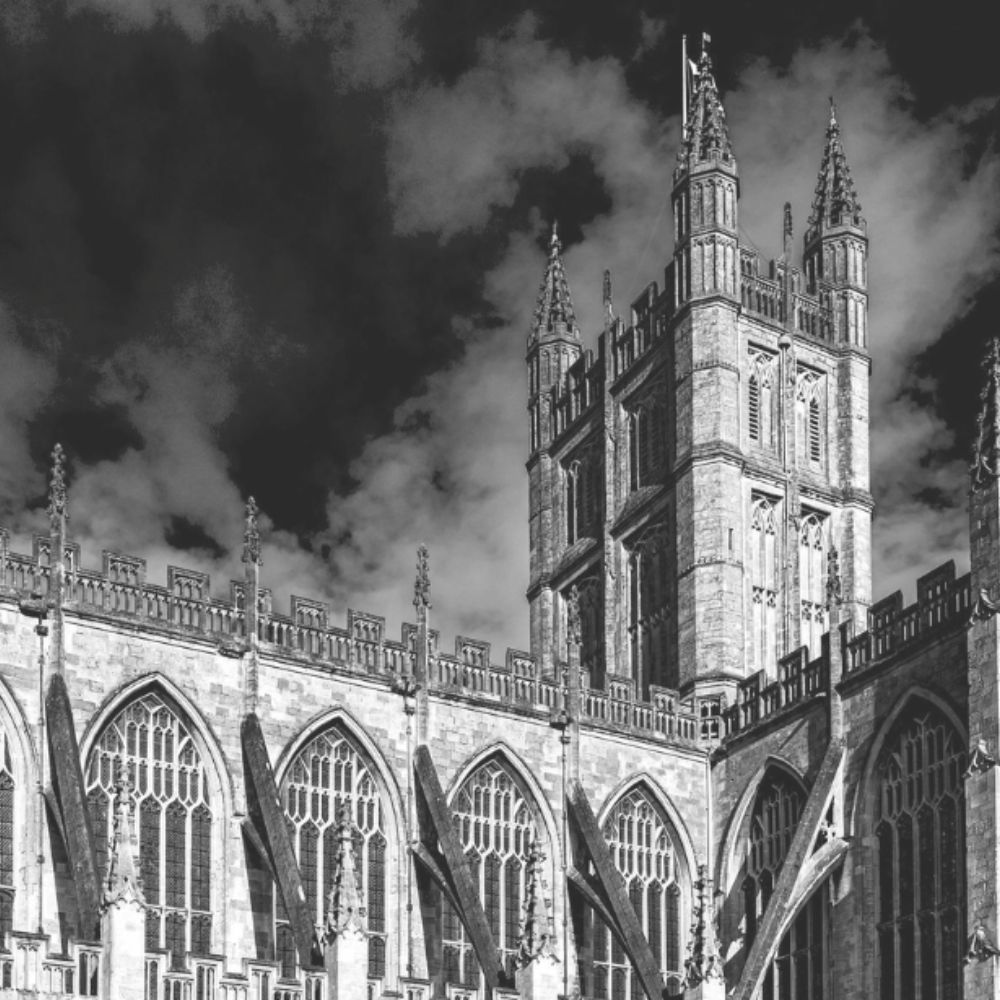Betty Suchar from the Bath Royal Literary and Scientific Institution shares with us just some of the fascinating stories that lie behind a day of talks on Gothic Fiction.
What words come to mind when thinking about Gothic Fiction? Bleak, uncertain, bewildering, threatening? Or are you more likely to conjure up visual images from the Middle Ages of castles and towers or of sublime landscapes full of mist, or hanging moons? Or do you prefer psychological conflict and a dramatic emotional atmosphere?
Whatever appeals, October with the prospect of winter ever nearer and its gathering darkness seems an appropriate time to explore Gothic Fiction.
For some months we have been planning a day of talks at the Bath Royal Literary and Scientific Institution which addresses the appeal of Gothic fiction and four authors of Gothic literature who have lived in Bath at some time: William Beckford, Ann Radcliffe, Mary Shelley, and Angela Carter.
You may have authors that you prefer to the ones we have named. For this reason, we have launched a competition. We are asking you to let us know what you think is the greatest Gothic novel and why. The winner will receive two tickets to the recently opened museum in Bath, Mary Shelley’s House of Frankenstein. Click here for more information on how to enter.
https://www.brlsi.org/about-us/gothic-novel-competition/
Taking the Frankenstein Walk in Bath (started by one of our speakers, Sheila Hannon, really opened my eyes to the life of Mary Shelley (1797-1851) and her time in Bath. Her parents were both intellectuals, but Mary did not know her mother at all. Mary Wollstonecraft, died shortly after Mary was born.
Mary was only a teenager when she ran away with Percy Bysshe Shelley, a major romantic poet. They left England in 1816, known as the Year of No Summer because a volcanic eruption blocked the sun’s rays, to travel to Switzerland. There they spent much time with Lord Byron. The restlessness of long days confined by the bad weather led to the challenge of writing a story.
An idea came to Mary in Switzerland, but much of the writing of her novel, Frankenstein, occurred in Bath and there are letters from her to prove it. In terms of her life story, while in Bath she experienced much personal upheaval. Not only did she help her stepsister, Claire Clairmont, who was to give birth to Byron’s child in Bath but in addition, during this time Shelley’s wife, Harriet, committed suicide and a few months later Percy and Mary married on 30 December 1816.
For a number of years, I have been Identifying women who lived in Bath with a hunger for learning, curiosity about the world and the courage and creativity to realize their potential and who could be role models to us all. These women like Mary Shelley deserved a plaque. On the 27th of February 2018, a plaque honouring Mary Shelley was unveiled by Sir Christopher Frayling just outside the Pump Room that is 5 Abbey Churchyard where she lived when in Bath. The year was most appropriate as 2018 was the 200th anniversary of the publication of Frankenstein.
Ann Radcliffe (1764-1823) is linked in many people’s mind with the novel by Jane Austen, Northanger Abbey, as this novel mocks the Gothic genre and argues that Gothic novels are particularly inappropriate for impressionable young ladies to read. Radcliffe’s most popular novel, The Mysteries of Udolpho, was published in 1794. Ann lived in Bath because her parents managed the Wedgwood showroom on Milsom Street. Ann met and married William Radcliffe in Bath at St. Michael’s Without Church, Broad Street on 15 January 1787.
The most modern writer covered in the Symposium is Angela Carter (1940-1992) who lived in Bath in the 1970’s at 5 Hay Hill. It was in Bath that Carter wrote probably her most famous book, The Bloody Chamber. Carter and Sir Christopher had petitioned the city to dedicate a plaque to Mary Shelley in the 1970’s but the Council refused at that time. Luckily by 2018, attitudes had changed and the fact that Frankenstein was a global icon made recognition possible. Also, at last there is some appreciation of the fact that only a small number of plaques in Bath have been awarded to women. Be aware that this gender imbalance of plaques in Bath continues to need correcting. Carter now has a plaque in Bristol and in London but not yet in Bath.
William Beckford (1760-1844) is a fascinating character and if you have not heard about his Gothic novel, Vathek (1786) then another reason to join us on 22 October either at Queen Square or online.
BOOKING DETAILS
Bath’s Gothic Fiction – A Day-Long Programme of Talks
Saturday 22nd October, 10am-4pm| [LIVE at 16 Queen Square Bath OR Online]
Tickets: [£10 for Members / £25 for Non-Members] at brlsi.org/whats-on or via https://www.brlsi.org/whatson/baths-gothic-fiction-a-day-long-programme-of-talks/

